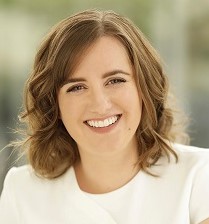Solution Focused Therapy; Cognitive Behavioural Therapy; Emotion Focused Therapy; Psychodynamic Therapy; Narrative Therapy … extensive research has been done on all of these, demonstrating their effectiveness across a broad range of mental health problems.
However, there are so many therapies present in the world of psychological interventions, it can leave clients wondering what do they mean, and what is the difference between them all?
Developed by Steve de Shazer and Insoo Kim Berg during the 1980s, Solution Focused Therapy gives the same importance to hearing the client’s story and seeking to make positive changes in the client’s life, as all other therapeutic interventions.
Understanding the Principles of Solution Focused Therapy
One major difference however, is the development of client goals, as these do not come from the therapist, but rather the client themselves.
This means that the first question a client may encounter in a solution focused therapy session may just be: “What do you want to get out of being here?”.
Another focus of solution focused therapy is the belief that the resources required to achieve the goal, are already present with the client themselves, and will be utilised to make changes.
Essentially, solution focused therapy involves exploring and examining resources that are available to the client and applying them in order to achieve the desired goals.
Focus on Solutions, Not Problems
This summary of the intervention’s aim is what creates the name ‘solution focused therapy’. Unlike other therapeutic interventions, it is not a problem focused intervention in which the problem is examined and changed. Instead, it immediately begins to explore and analyse possible solutions with the client.
This may sound overwhelming and even impossible at first glance, as the client has likely tried many possible solutions to their problem/s. This is recognised in solution focused therapy and these attempts are explored as well. Regardless of whether they led to positive or negative change, they are worth analysing.
As mentioned previously, goals are developed by the client, not the therapist. Basically, the client is the expert when it comes to goals and resource availability. When exploring goals, a therapist might assist the client in reflecting on what things will be like once the problem is solved, and how things will be different once this occurs.
Looking at Exceptions
Exploring exceptions is a therapeutic approach that is particularly common in solution focused therapy. This is rather useful when a client feels an inability to change their situation or a sense of hopelessness about achieving change.
For example, something to consider might be days when the problem is better than on other days – and what is happening to make these days better. This allows the client to take into consideration even small changes that are occurring in their lives.
These changes can then be expanded on, to make more significant changes in their life or simply to reassure the client that change is indeed occurring.
How Effective is Solution Focused Therapy?
Research has been conducted into the effectiveness of solution focused therapy on a range of population groups including mental health, children and addiction problems (alcohol, drugs and gambling). Results have indicated significant support for the use of solution focused therapy in these populations as it leads to positive outcomes.
Of particular notice however, is its single session success, with sometimes 25% of the sample choosing to receive only one session and still reporting positive results.
 Author: Sharyn Jones, B Psych (Hons).
Author: Sharyn Jones, B Psych (Hons).
Sharyn Jones is a Brisbane psychologist with 10 years of experience working with adults, adolescents and children and their parents. Using a combination of cognitive behavioural and solution focused therapies, she aims to facilitate positive changes in client’s lives so that they can achieve and obtain their desired goals.
To make an appointment try Online Booking. Alternatively, you can call Vision Psychology Brisbane on (07) 3088 5422.
References:
- Bannink, F (2006). 1001 Solution-Focused Questions. New York: W.W. Norton & Company Inc.
- Macdonald, A. (2007). Solution-Focused Therapy: Theory, Research and Practice. London: SAGE Publication Ltd.